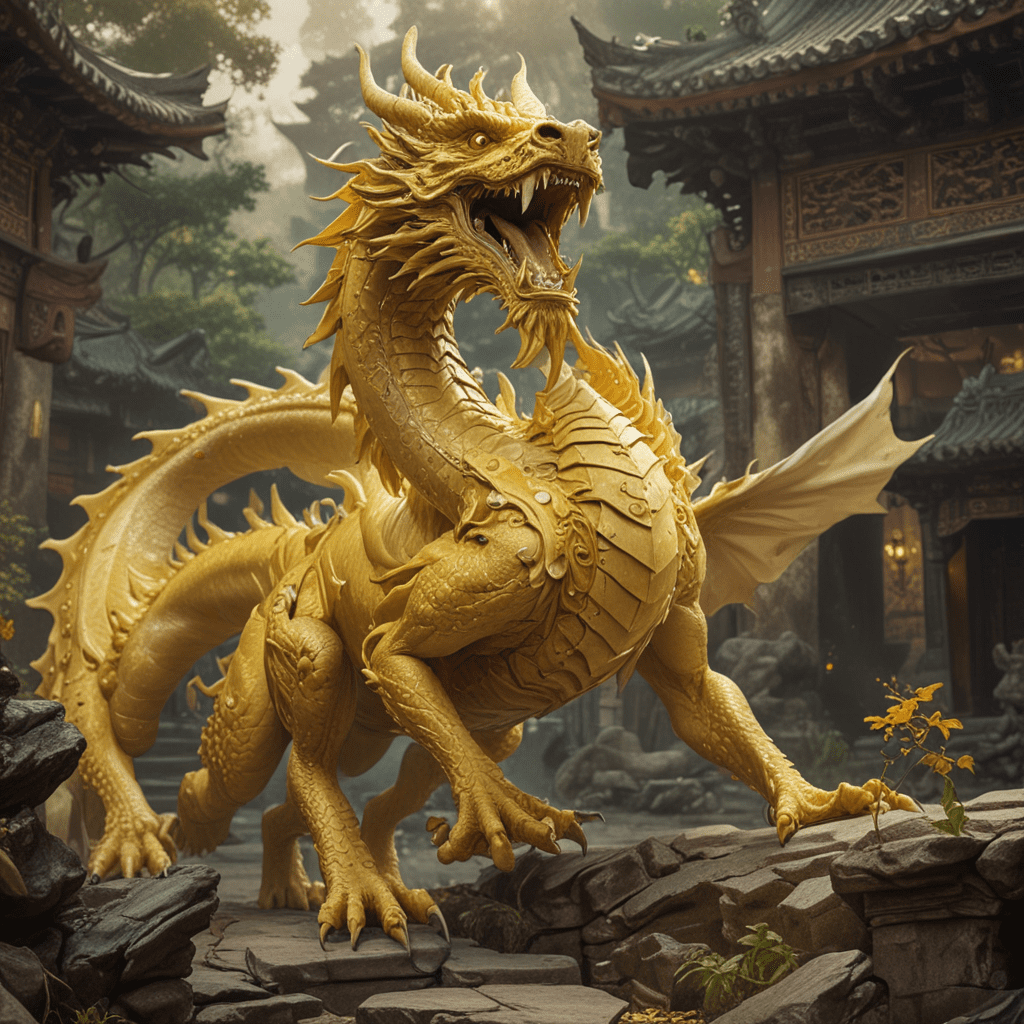The Myth of the Yellow Dragon in Chinese Mythology
The yellow dragon, a prominent figure in Chinese mythology, holds immense cultural, historical, and religious significance. Throughout history, it has been revered and feared, symbolizing power, wisdom, and the might of imperial China.
Origins of the Yellow Dragon
The origins of the yellow dragon can be traced back to ancient Chinese folklore. Legends depict it as a descendant of the celestial dragon, Yinglong, who aided the legendary emperor Huangdi in his battles against the forces of chaos. Over time, the yellow dragon became associated with the earth and otherworldly realms.
Physical Attributes and Symbolism
The yellow dragon is often depicted as a serpentine creature with a long, winding body covered in golden scales. It possesses four legs, sharp claws, and a distinctive horned head adorned with flowing whiskers. The yellow color signifies its connection to the earth, while its horns and claws represent its power and authority.
The Yellow Dragon in Imperial China
During the Han dynasty (206 BCE – 220 CE), the yellow dragon became a symbol of imperial power. Emperor Wu of Han claimed to have seen a yellow dragon while hunting, which was interpreted as a sign of divine favor. Subsequently, the yellow dragon was adopted as the emblem of the emperor and appeared on imperial robes, flags, and other regalia.
Cultural and Religious Significance
In Chinese culture, the yellow dragon is revered as a bringer of rain and prosperity. It is often associated with water deities and is believed to control the flow of rivers and lakes. In Taoist and Buddhist traditions, the yellow dragon represents enlightenment and spiritual transcendence.
6. The Yellow Dragon in Folklore and Literature
In Chinese folklore, the yellow dragon plays a prominent role in numerous tales and legends. The most famous of these is the legend of the Dragon King, who controls the waters of the East China Sea. The yellow dragon is also featured in classic works of Chinese literature, such as the epic poem "Journey to the West," where it is portrayed as a powerful ally to the protagonist, Sun Wukong.
7. The Yellow Dragon in Modern Times
Today, the yellow dragon continues to be a popular symbol in Chinese culture. It is often depicted in art, literature, and cinema, where it evokes its traditional associations with power, wisdom, and good fortune. The yellow dragon has also become a symbol of Chinese heritage and national pride.
8. Comparison to Other Dragon Mythologies
The yellow dragon shares similarities with dragon figures in other mythologies around the world. Like the European dragon, it is often depicted as a powerful and feared creature. However, the yellow dragon also possesses distinct characteristics that reflect its unique role in Chinese mythology. For example, its association with the earth and water sets it apart from many Western dragon myths.
9. Interpretation and Analysis
Scholars have interpreted the yellow dragon in various ways. Some view it as a symbol of the Chinese people's connection to nature and the supernatural. Others see it as a representation of the power and authority of the Chinese emperor. Regardless of its specific interpretation, the yellow dragon remains a fascinating and enduring figure in Chinese mythology.
10. Conclusion
The yellow dragon is a multifaceted figure that has played a significant role in Chinese culture for centuries. Its origins, symbolism, and cultural significance have been explored in numerous works of scholarship. By understanding the myth of the yellow dragon, we gain a deeper appreciation for the richness and complexity of Chinese mythology.
FAQs
- What is the significance of the yellow color in the myth of the yellow dragon?
The yellow color signifies the dragon's connection to the earth and its role as a bringer of rain and prosperity.
- Why is the yellow dragon associated with the Chinese emperor?
During the Han dynasty, Emperor Wu of Han claimed to have seen a yellow dragon, which was interpreted as a sign of divine favor. This led to the adoption of the yellow dragon as a symbol of imperial power.
- What is the difference between the yellow dragon and other dragon figures in world mythology?
The yellow dragon possesses distinct characteristics that reflect its unique role in Chinese mythology, including its association with the earth and water, as well as its connection to the Chinese emperor.



